

Also by Eric Metaxas
Amazing Grace: William Wilberforce and the Heroic Campaign to End Slavery
Bonhoeffer: Pastor, Martyr, Prophet, Spy
Seven Men
2014 Eric Metaxas
All rights reserved. No portion of this book may be reproduced, stored in a retrieval system, or transmitted in any form or by any meanselectronic, mechanical, photocopy, recording, or any otherexcept for brief quotations in printed reviews, without the prior permission of the publisher.
Published in Nashville, Tennessee, by Thomas Nelson. Thomas Nelson is a trademark of Thomas Nelson, Inc.
Thomas Nelson, Inc., titles may be purchased in bulk for educational, business, fund-raising, or sales promotional use. For information, please email SpecialMarkets@ThomasNelson.com.
All Scripture quotations, unless otherwise indicated, are taken from The Holy Bible, New International Version, NIV. Copyright 1973, 1978, 1984, 2011 by Biblica, Inc. Used by permission. All rights reserved worldwide.
Scripture quotations marked NLT are taken from the Holy Bible, New Living Translation, copyright 1996, 2004. Used by permission of Tyndale House Publishers, Inc., Wheaton, Illinois. All rights reserved.
Scripture quotations marked MSG are taken from The Message. Copyright 1993, 1994, 1995, 1996, 2000, 2001, 2002. Used by permission of NavPress Publishing Group.
Cover design: Kristen Vasgaard
Cover photo: Art Resource, NY
Interior design: Matthew Van Zomeren
ISBN 978-1-59555-588-5
ISBN 978-1-59555-589-2 (eBook)
Printed in the United States of America
14 15 16 17 18 RRD 9 8 7 6 5 4 3 2 1
CONTENTS
Group Size
The Bonhoeffer video study is designed to be experienced in a group setting such as a Bible study, Sunday school class, or any small group gathering. To ensure everyone has enough time to participate in discussions, it is recommended that large groups break up into smaller groups of four to six people each.
Materials Needed
Each participant should have his or her own study guide, which includes notes for video segments, directions for activities and discussion questions, as well as personal studies to deepen learning between sessions.
Timing
The time notations for example (20 minutes) indicate the actual time of video segments and the suggested times for each activity or discussion. For example:
 Individual Activity: What I Want to Remember (2 minutes)
Individual Activity: What I Want to Remember (2 minutes)
Adhering to the suggested times will enable you to complete each session in 90 minutes. If you have only one hour for your meeting, you will need to use fewer questions for discussion. You may also opt to devote two meetings rather than one to each session. In addition to allowing discussions to be more spacious, this has the added advantage of allowing group members to read related chapters in the Bonhoeffer book and to complete the personal study between meetings. In the second meeting, devote the time allotted for watching the video to discussing group members insights and questions from their reading and personal study.
Group Practice
Each session ends with a suggested application activity for group members to complete together between sessions. Although the activity is completed outside of the group meeting, its a good idea to look over the group practice before concluding the meeting to clarify any questions and to make sure everyone is on board.
Facilitation
Each group should appoint a facilitator who is responsible for starting the video and for keeping track of time during discussions and activities. Facilitators may also read questions aloud and monitor discussions, prompting participants to respond and ensuring that everyone has the opportunity to participate.
Personal Studies
Maximize the impact of the curriculum with additional study between group sessions. Every personal study includes reflection questions on Bonhoeffers life and teaching as well as a Bible study and a guided prayer activity. Youll get the most out of the study by setting aside about thirty minutes between sessions for personal study, as well as additional time to complete the group practice activities.
The movement upward [toward God] cannot be separated from the movement toward our neighbor. Both belong indissolubly together... Standing under Gods rule means living in community with God and with the church.
DIETRICH BONHOEFFER, SANCTORUM COMMUNIO
 Welcome!
Welcome!
Welcome of Bonhoeffer. Each of the four sessions in this study is designed to be completed in 90 minutes. If you have only one hour for your meeting, you will need to choose fewer questions for your discussion. Your may also opt to devote two meetings rather than one to each session.
If this is your first time together as a group, take a moment to introduce yourselves to each other before watching the video. Then lets begin!
 Watch Video: What Is the Church? (20 minutes)
Watch Video: What Is the Church? (20 minutes)
Play the video segment for . As you watch, use the outline provided to follow along or to take additional notes on anything that stands out to you.
NOTES
Dietrich Bonhoeffer was a pastor and a theologian. He had a passion for truth and a commitment to justice on behalf of those who face implacable evil.
Bonhoeffer was a member of the Igel (pronounced eagle) fraternity at Tbingen University in 1923. Igel is the German word for hedgehog.
Karl Bonhoeffer wanted his children to think clearly to follow rigorous logic to a conclusion and not be sidetracked by emotions. This was part of the Bonhoeffer family culture.
At eighteen, Bonhoeffer decided he wanted to spend a semester studying in Rome. There, he encountered a larger vision of the church:
The universality of the church was illustrated in a marvelously effective manner. White, black, yellow members of religious orders everyone was in clerical robes united under the church. It truly seems ideal.
At twenty-one, Bonhoeffer completed his doctorate on the topic, What is the church?
At twenty-two, he spent a year in Barcelona, Spain, as the assistant vicar at a German-speaking church.
At twenty-four, he studied at Union Theological Seminary in New York City.
Bonhoeffers cosmopolitan upbringing and the rigorous tradition of thinking clearly led him to think beyond national lines when it comes to the church.
Bonhoeffers characteristics:
He was not afraid to question things.
He was always considering both sides of an issue.
He was willing to think things through rigorously and never rejected anything out of hand.
He was committed to a pure search for the truth. This meant asking, What is Gods idea of Germany? Ultimately, this led him to reject Hitler and the political doctrine of the Nazi party called National Socialism.
What does this mean for us today?
1. We have to consider Bonhoeffers idea of a pure search for truth.
We have to ask, Am I just accepting tradition?
What did the first-century church do? What did Jesus do? What are we to do?
We must have the confidence to be willing to question things.
Next page
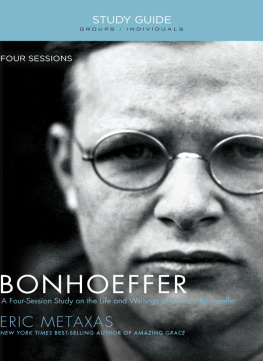
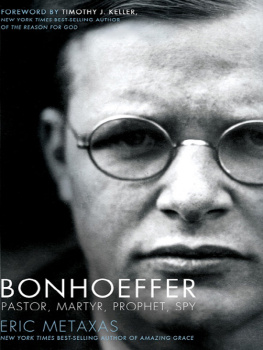

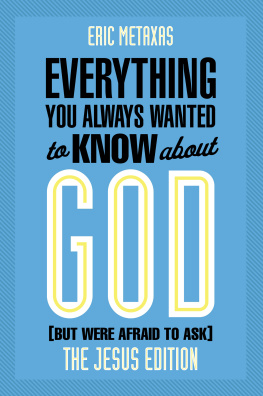

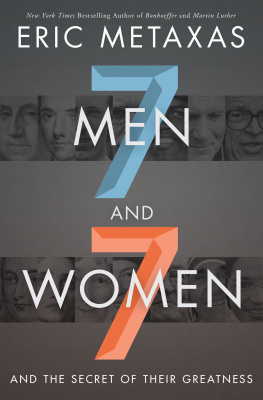


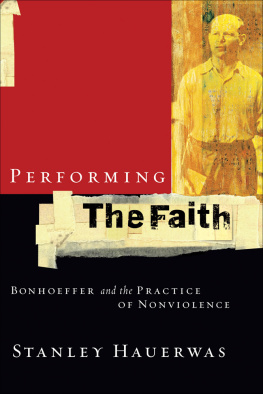
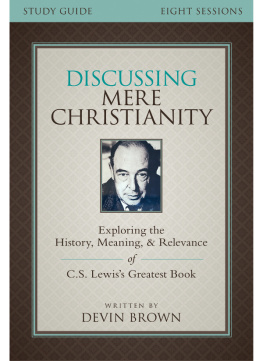
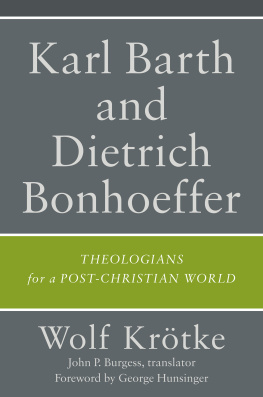


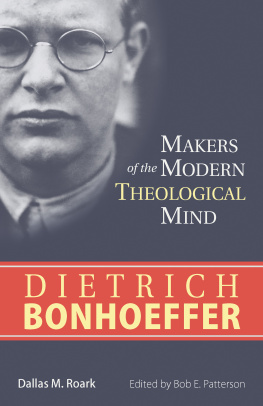
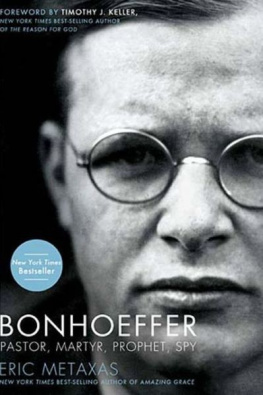
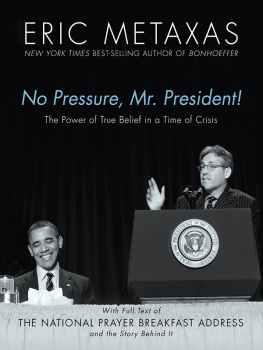



 Individual Activity: What I Want to Remember (2 minutes)
Individual Activity: What I Want to Remember (2 minutes)